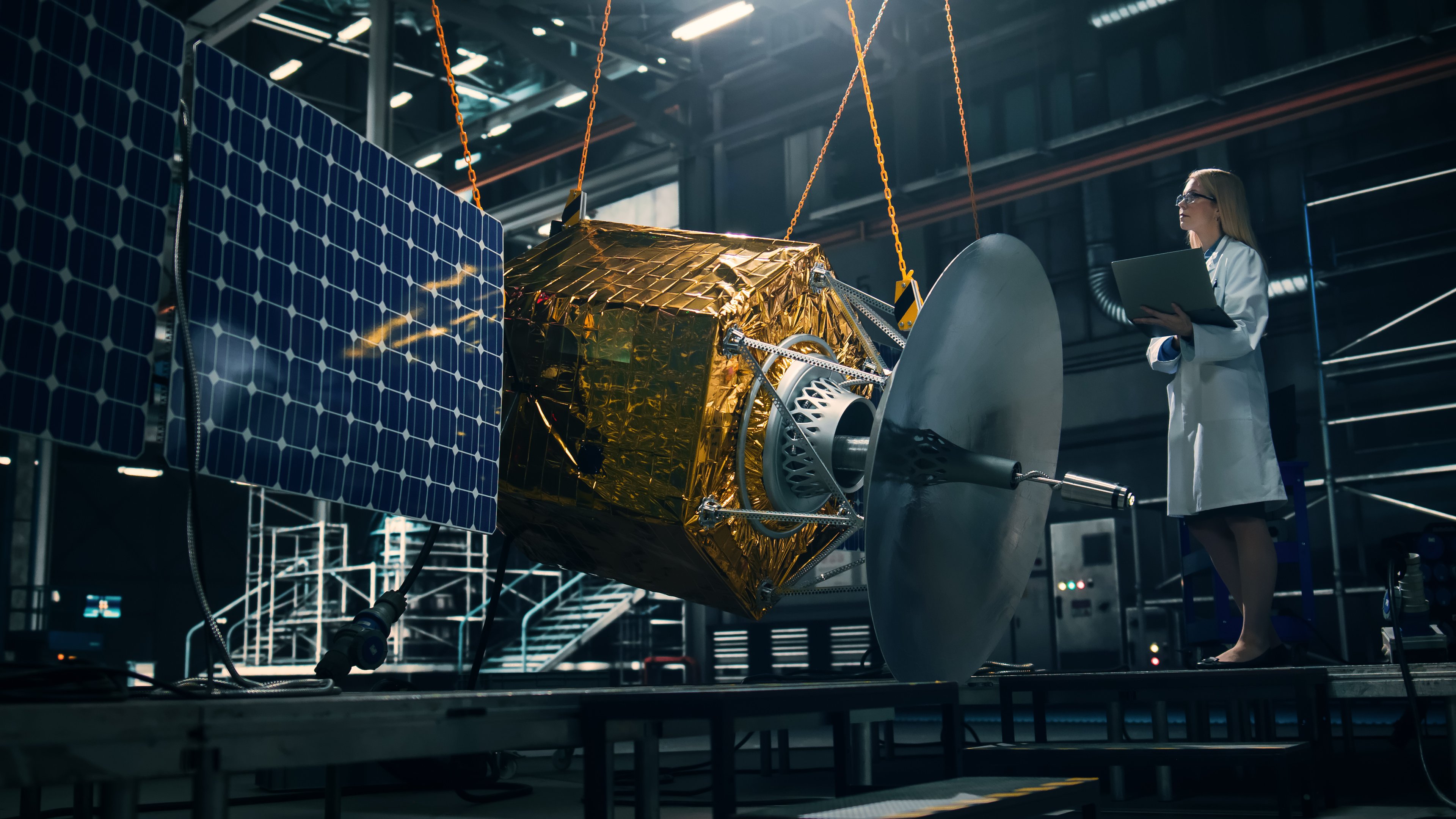Texas is home to some of the largest companies in the U.S., including Oracle, Tesla, and AT&T. The Lone Star State's low taxes, low real estate and operating costs, and central location all made it an appealing alternative to the coastal states for many businesses.
Those advantages also drew in plenty of smaller and faster growing companies. One of those newcomers is AST SpaceMobile (ASTS +1.84%), a Midland, Texas, based producer of low Earth orbit (LEO) satellites that was founded in 2017. The company went public by merging with a special purpose acquisition company (SPAC) on April 7, 2021.

Image source: Getty Images.
AST's stock opened at $11.63, and it now trades at about $85. It's also up more than 300% this year. Let's see if it might soar even higher over the next few years.
What does AST SpaceMobile do?
AST's LEO satellites directly beam 2G, 4G, and 5G cellular signals to smartphones and other devices to serve rural areas that aren't covered by terrestrial cellular towers. They transmit that data through low- to mid-band spectrums, which operate at lower speeds but have a broader range than the high-band spectrums used by SpaceX's Starlink internet satellites.
AST has already signed partnerships with AT&T, Verizon, Vodafone, and Rakuten Group to expand their 5G networks with its LEO satellites. That support is helping it keep pace with Starlink, which has struck similar LEO partnerships with T-Mobile and Rogers Communications.

NASDAQ: ASTS
Key Data Points
Last September, AST launched its first five Block 1 BlueBird (BB1) commercial satellites. This January, the Federal Communications Commission (FCC) granted it a temporary authorization to test those satellites with AT&T's and Verizon's cellular networks.
It originally planned to launch its first four Block 2 BlueBird (BB2) satellites -- which will be three and a half times larger than its BB1 satellites and process about 10 times more data -- from India this July. However, that closely watched launch has been postponed for at least a few more months.
Looking further ahead, AST still plans to have 45 to 60 satellites in orbit by the end of 2026. Over the long term, it plans to expand its "constellation" to 243 LEO satellites, but that ambitious plan would require a much broader approval from the FCC.
Could AST SpaceMobile's stock soar even higher?
In 2024, AST generated only $4 million in revenue as it incurred a net loss of $300 million. But from 2024 to 2027, analysts expect its revenue to have a compound annual growth rate (CAGR) of 473% to $830 million as it turns profitable by the final year. That outlook seems rosy, but it will depend on its ability to achieve its launch targets and secure more telecom partnerships.
With a market cap of $22.7 billion, AST is already valued at 27 times its projected sales for 2027. That rich valuation could limit its upside potential and set it up for a steep drop during the next market downturn. The company has also increased its number of outstanding shares by 426% since its SPAC merger with secondary offerings and stock-based compensation -- and it will likely keep diluting its investors as long as it keeps burning cash.
That's why it wasn't surprising when it recently announced that it would sell another $800 million worth of shares to fund its operations over the next three years. Its insiders also sold more than twice as many shares as they bought over the past 12 months.
All of those red flags suggest that AST's stock is getting overheated in this frothy market. A lot of its future catalysts -- including its BB2 launches and broader FCC approvals -- might already be baked into its valuations. It's still a promising play on the global LEO satellite market, which Market Research Future predicts will have a CAGR of 16.8% from 2025 to 2035. But I'd wait for its valuations to cool off before pressing the buy button.





